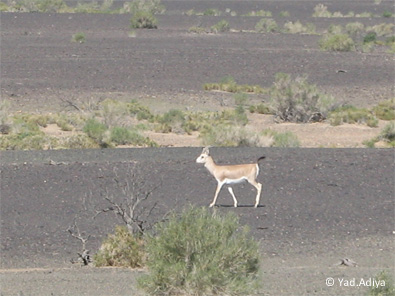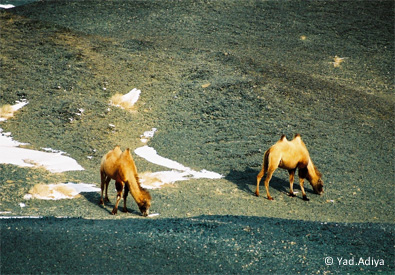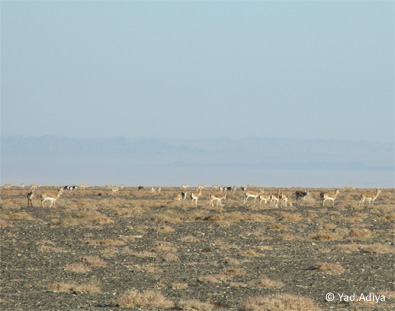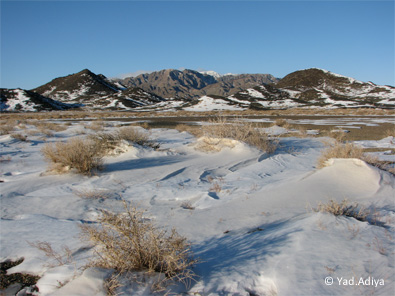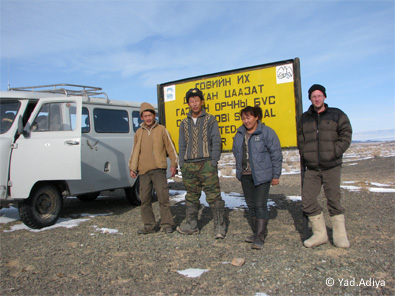From the 18th to the 30th of November 2009, Adiya (Bactrian Camel EDGE Fellow) and Henry (Steppe Forward Programme Co-ordinator) participated in the Mongolian ungulate survey organised by the Mongolian Academy of Science’s Institute of Biology, funded by the World Bank. The survey’s aim is to establish an estimate of ungulate numbers across the eastern and southern regions of Mongolia and especially of Mongolian gazelle (Procapra gutturosa), goitered gazelle (Gazella subgutturosa) and khulan (Equus hemionus).
We were assigned the Gobi-Altai province in the southwest of Mongolia, home to most of the Great Gobi A Strictly Protected Area. Strictly Protected Areas are designated by the Mongolian government as regions for the preservation of wildlife. Herding and tourism are tightly controlled, and hunting and mining are prohibited. Although there are no Mongolian gazelle to be found here, there are plenty of goitered gazelle and khulan and is also the habitat of the wild Bactrian camel (Camelus bactrianus).
For most survey teams, the survey would be in the form of northerly transect lines, 30km apart. However, for our designated area the terrain is so rugged – vast uneven steppe with steep rocky outcrops hundreds of meters in elevation scattered across the landscape – that it would be impossible to conduct such a survey. We therefore used a combination of point count surveys on peaks for a good overview of the steppe habitat below where ungulates feed and also transect lines wherever possible. This revealed sparse but regular amounts of ungulates; mostly wild camels – sometimes in groups of more than ten – along with khulan, goitered gazelles and also Siberian ibex.
This distribution can be explained by the arrival of the winter season. Now that most of the Gobi is cold enough, the little moisture that falls as snow is immediately trapped on contact with the ground and blankets the landscape. This changes the location of wildlife dramatically as water is now available almost everywhere, although in solid state, and so ungulates do not need to rely on water points that are so vital to their survival in the summer months. As the saxaul plant (Haloxylon ammodendron) is also sparsely but widely distributed on the steppe habitat, ungulates can find food and water in all corners of the park. Saxaul conservation – which is used by herders and local people for firewood – is vital to the ungulates survival as it is their main food source.
Also November is the start of the breeding season for the wild Bactrian camel. Males are competing for females and starting to form herds, with the male generally at the back of the group to monitor the location of its members and guard from opportunistic young or feeble males who have not yet been able to form their own herd, if ever. We were lucky to find a number of these herds although they have not yet reached the size that they can extend to further into the winter season, some herds can rise to over a hundred individuals.
We hope that the results of all the survey teams will be analysed shortly so that we can all appreciate the best estimate so far of numbers of Mongolian gazelle, goitered gazelle and khulan in Mongolia. Hopefully more surveys like these will be made in the future to see how well ungulate populations are resisting to increasing threats such as climate change, overgrazing, poaching, illegal mining, the list can go on and on…
Finally, we would like to thank the Great Gobi Park Administration and their families for their kind collaboration, help, hospitality and kindness without which our part of the survey would not have been possible.
